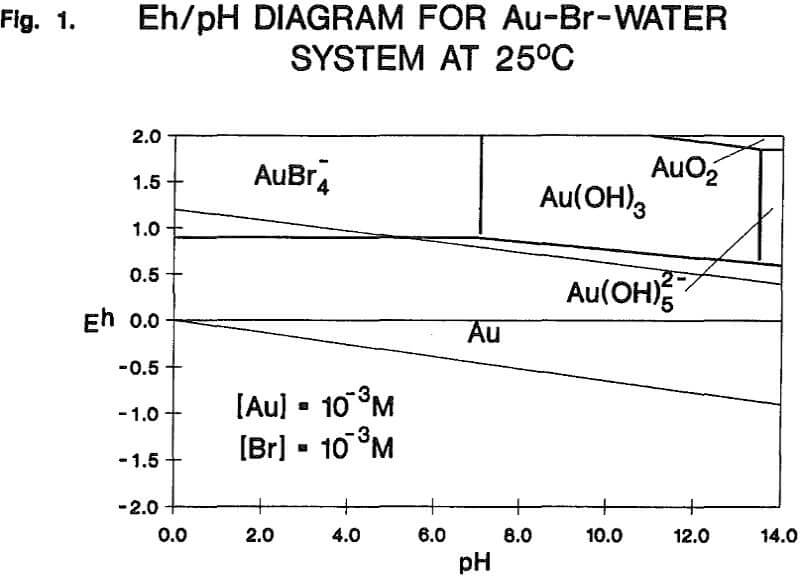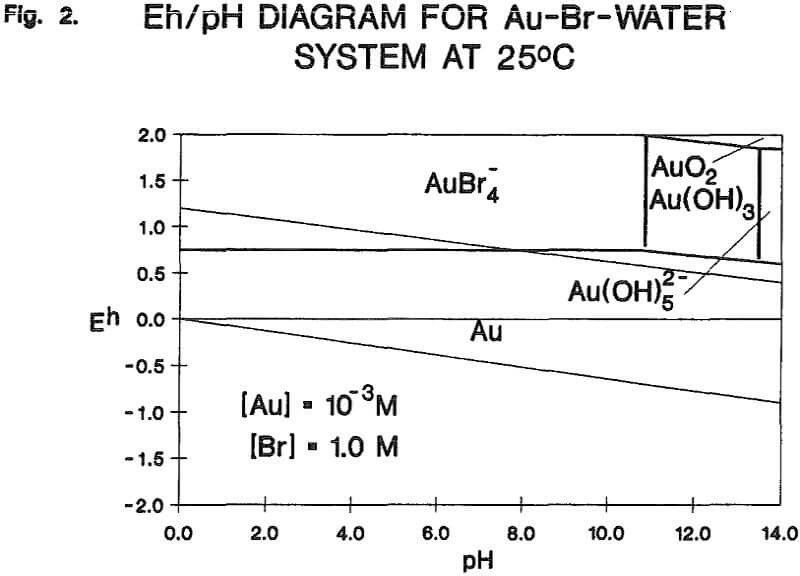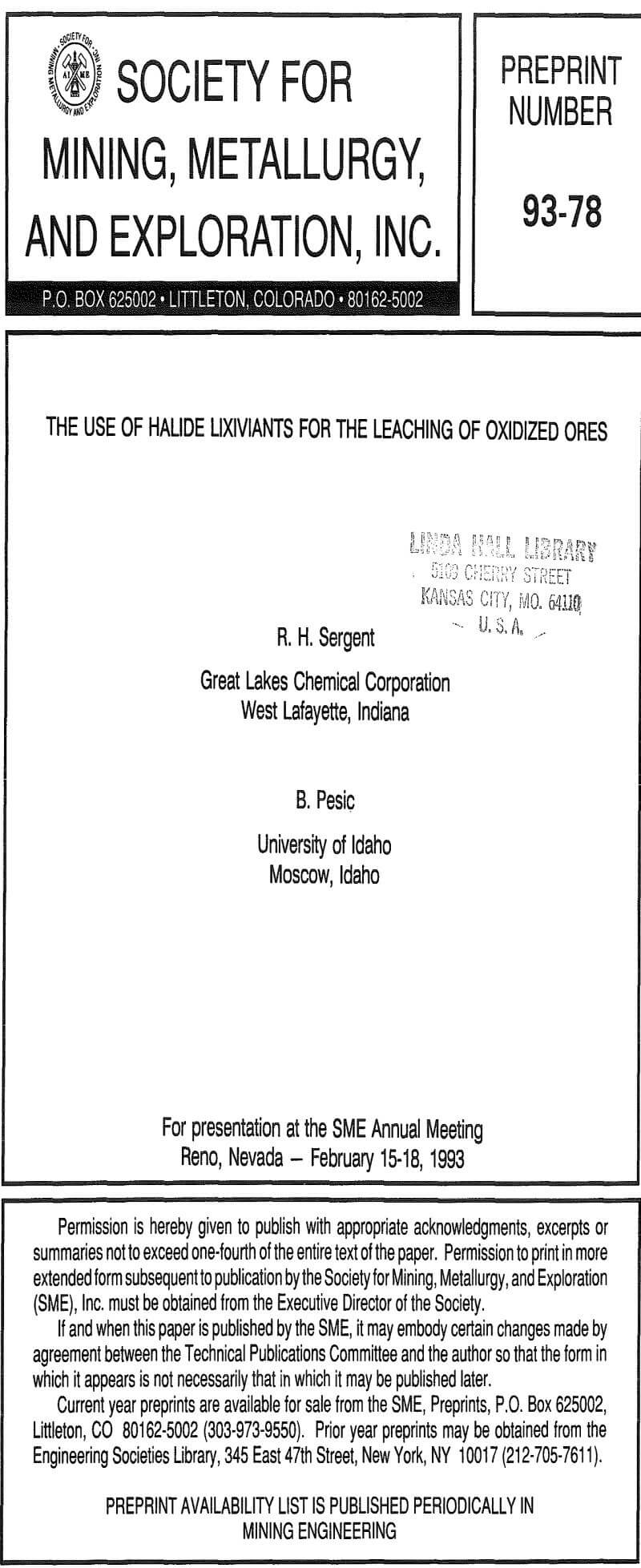Table of Contents
The interest in using halogens for extracting precious metals from ores has increased due to changes in ore characteristics, environmental concerns and regulations. The rediscovery of halogen leaching capability has been the topic of these and other writers. Much work has been done on the performance of bromine, chlorine and iodine. Of these, bromine and chlorine look most promising. Iodine is quite expensive and sometimes forms an insoluble film on a precious metal surface.
Pressure Leaching and Bromination
The bromination leaching apparatus consisted of: 1-liter glass reactor, temperature controlled water bath, and motor with a stirrer. Liquid bromine was added by a high precision teflon/glass pipettor. NaBr was added in the solid form.
One hundred grams of PXF ore was transferred into a 2-liter glass reactor and a known amount of sulfuric acid was also added. The glass reactor also served as an autoclave liner. After transferring the glass reactor into a stainless steel body of the autoclave, the autoclave (Autoclave Engineers, 2-liter ZipperClave) was assembled. The heating to desired temperature was achieved by external electric heaters. During the heating time, the stirring rate was set to only a few hundred per minute revolutions, and the oxygen was absent.
Direct Bromination Leaching of as received PXF and CCD leach residues reveal that brown bromine color disappeared within minutes of its introduction. The pulp discoloration and the decrease of the ORP to 300-400 mV range indicated that all bromine was consumed immediately. The fire assaying of the bromination leaching residues confirmed that no gold dissolution occurred during the bromination. Because the standard bromine concentration was 0.5 ml/I. It was decided to examine the bromine concentration effect on gold dissolution from the autoclave leach residue.
However, the gold recoveries were still unsatisfactory (only 61.26% with 2 ml/I of bromine). Higher than 2 ml/I bromine concentrations were not used because higher concentrations would be, from practical point of view, cost prohibitive.
Pretreatment of CCD Pulp and Subsequent Bromination Leaching
Pretreatment of CCD pulp (100g) with 2 ml of H2O2 for 2 hrs and subsequent 24 hr leaching with bromine (0.5 ml Br2; NaBr=2g; H2SO4=10 ml; T=40° C) responded with only 17.2% gold recovery.
Pretreatment of CCD pulp (100g) with 10 and 20 ml of HNO3 for 2 hrs and subsequent 3 hr leaching with bromine (0.5 ml Br2; NaBr=2g; T=40°C) responded with 18.7% and 15.2% gold recovery, respectively. In either case, amount of nitric acid was sufficient to raise the ORP of the pulp more than 492 mV (10 ml HNO3) and 525 mV (20 ml HNO3).
Among the above pretreatment methods, autoclave leaching and chlorination produced the most satisfactory results. Among these two, the chlorination was the most appropriate to further examine in more details. Effect of many parameters on the chlorination of gold from the CCD sample.
Addition of bromine was very beneficial for dissolution of gold with chlorine. In the absence of bromine, chlorination recovered only about 40% of gold. When 0.5 ml of bromine was added, the gold recovery increased to 68.83%.
Other Lixiviants
Because of the ore contained in silver, the present halides will cause formation of partially soluble silver bromide (or chloride). Silver halide is well soluble in sodium thiosulfate, and for that reason this reagent was examined for leaching of brominated pulp.
Bromination of the pulp was done under standard conditions (0.5 ml Br2; NaBr = 2g; T=40°C). After bromination, lime was added to adjust pH to 7.0, after which sodium thiosulfate was added (10 grams). Sodium thiosulfate leaching was done for 2 hours at 40° C. Recovery of gold was 65.1%. This suggests the gold is still partially tied up in a oxidation resistant form.
The key to any discussion of any alternative to cyanide must focus on the relative cost and efficacy of the technology versus cyanide. The data generated on halogen leaching indicates that on fully oxidized ores halogen offers equal if not greater recovery of gold from ore. These recoveries are often greater than what can be recovered from the same ores if only partially oxidized.



